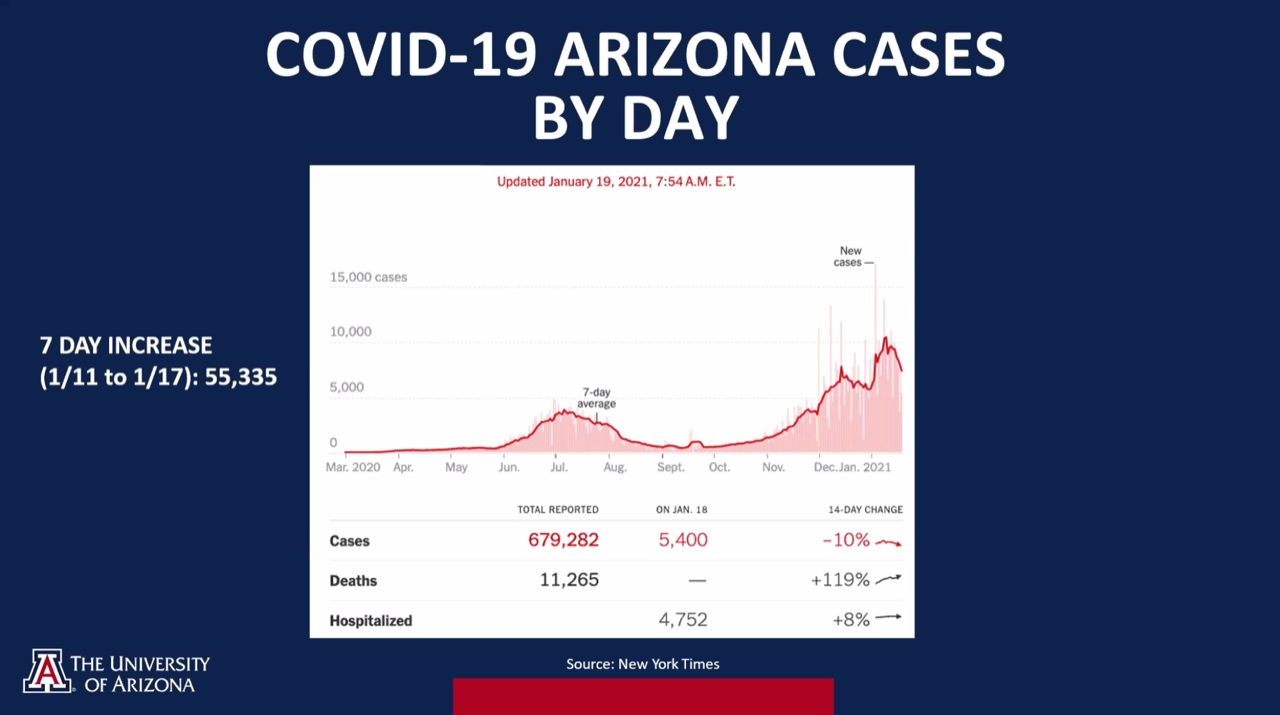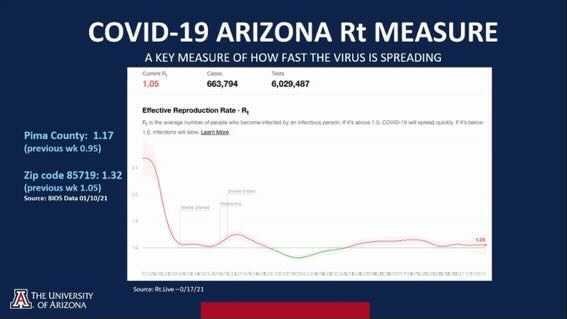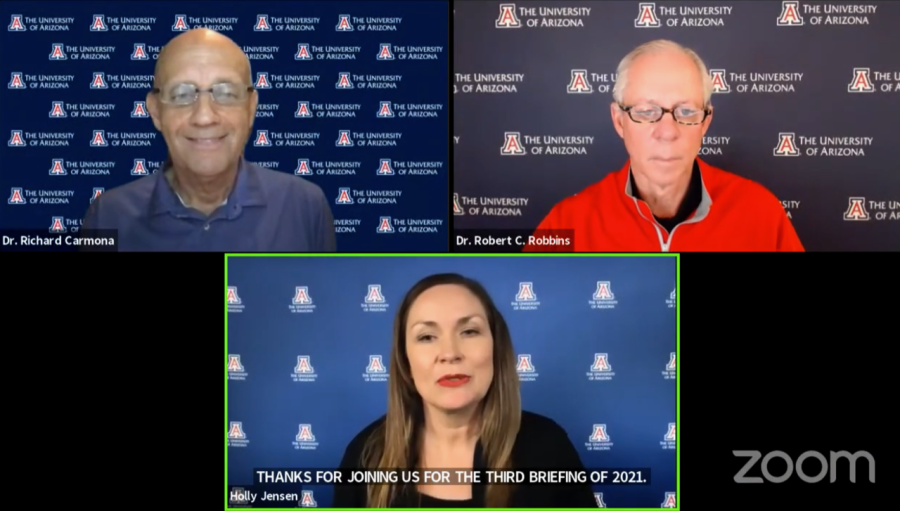The University of Arizona’s COVID-19 reentry task force met on Monday, Jan. 19, for the third briefing of the spring semester. The force discussed plans to increase testing for on campus residents and provided an update on the beginning of vaccine distribution.
The UA will remain in Phase 1 of the reentry protocol, which permits only “essential” classes of 50 or less to meet in person.
President Dr. Robert C. Robbins announced that the university’s “Test, Trace, Treat” team will ramp up weekly testing of campus residents in response to high levels of transmission in the university area. Students residing in university housing will be required to take two COVID-19 tests a week, with at least 48 hours in between tests.
“This is using the more accurate, less expensive, certainly more pleasant test, the PCR saline gargle test that we have at the University of Arizona,” Robbins added. “We’re incredibly grateful for this. It allows us to triple our capacity for testing. It allows us to go from 1,000 [tests] a week to 3,000 a week. That’s really, really important.”
Robbins also provided an update on vaccine distribution in partnership with Pima County.
“On Friday, we began vaccine distribution on the university campus,” Robbins said. “We’re one of six “pods” — points of delivery — for vaccines for the county of Pima. So, just to be very, very clear, the vaccine comes from and is under the control of the county. Dr. [Theresa] Cullen is the person in charge of vaccinations and distributions.”
The university was selected by the county to be the point of delivery for essential education workers. This includes not only all 15,000 UA staff and faculty, but also all nearby childcare providers, K-12 educators and staff and all Pima Community College faculty and staff.
RELATED: The UA to become point of distribution for COVID-19 vaccine
“Friday, Jan. 22, we’ll be up and running on the normal scheduling process,” Robbins said. “That day, 500 individuals will be vaccinated at the University of Arizona pod. We hope to expand this as Tucson Medical Center is doing to up to 1,000 or even more individuals a day.”
The past two weeks saw thousands of students move in from both in and out of the state, as well as the commencement of the first in-person classes of the semester. Yet, it is still unclear whether the resulting spike in COVID-19 transmission is also behind us.
Last week, over 9,000 COVID-19 diagnostic tests were administered, returning 167 positives — a positivity rate of 1.79%.
Task force Director Dr. Richard Carmona noted that as of Friday, Jan. 15, 28 students were being housed in isolation dorm rooms with 568 beds still available — an availability of 95%.

“At this time, even though things are looking a little better with hospital beds, ventilators and so on, let’s not forget that our health professionals are absolutely exhausted,” Carmona said. “There is so much they can take, and they’ve exceeded every expectation in caring for us. Let’s not be complacent.”
Statewide transmission of COVID-19 has dipped below county and university levels. As of Jan. 17, the rate of transmission for the state of Arizona is down to 1.05. Meanwhile, the Rt for Pima County and the university zip code, 85719, both increased.

“The president reported on transmissibility,” Carmona said. “The number there is low. As you can see, we are spreading disease pretty quickly now … we’re in the low 1.0s, which is something that at least gives us a little bit of thought that we’re doing some things right, but we can’t be complacent. The disease is spreading very, very rapidly. Even though it looks like we have a pause right here, now is the time to double down on our activities to make sure that we’ve don’t get another spike.”
The reentry task force will meet again next Monday morning at 10 a.m.
Follow Kristijan Barnjak on Twitter









